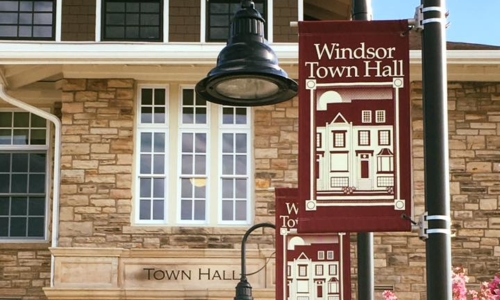Banner Brackets and Fly Fishing – Part Two

In my last post I related how fiberglass was chosen as the material for the banner bracket arms 25 years ago. But, it seemed that another important ingredient to the BannerFlex® Banner Bracket System immediately become necessary. We had learned quickly what the specifications of the pultruded (see below for explanation of “pultruded”*) fiberglass needed to be to flex properly and to be strong enough but in the first actual street installation of a 30″ wide by 94” tall banner it became apparent that we hadn’t solved all the challenges. And, in typical young entrepreneurial style, I had already sold 30 installations to the New Center Area of Detroit that needed to be delivered and installed the next week (we are waaaay more cautious and deliberate these days, I’m pleased to say!). On a blustery and very chilly early December day in 1985 our little crew of three men and one substantial bucket truck nestled up to the first light pole with confidence and enthusiasm. We were about to change the look of the streets around what was then the General Motors** headquarters building. It was very exciting stuff for a young business that had previously only done work around southwest Michigan.As soon we installed the first banner we backed away to admire our work, and warm our hands. At the same time, the Special Events Manager for The New Center Area Council, Patricia Haller, came out of her office to check out the progress. I had noticed right away that the banner looked a bit “pigeon-toed” with the outer hem of the banner looser than we had seen before. The top arm seemed to sag down a bit and the bottom arm was angled up the same amount. It was clear that Pat had noticed this as well and wasn’t smiling her usual, happy smile. The “look” just wasn’t what either one of us wanted. But, the good news was that with the 20 to 30 mph wind gusts, the arms were flexing and reacting perfectly, spilling wind and dampening the vibration on the light pole. I knew instantly what needed to be done to fix the pigeon-toeing but I also knew that it would take us a few days to come up with the proper modifications for everything to be perfect. I explained the situation to Pat and she understood and, what’s more, she graciously allowed us the extra time without penalty. I will always be grateful to Pat and her boss, Ann Lang, for the patience and understanding they granted to me that day.
The solution to the pigeon-toed look was to install a “cant” or wedge into the system such that without a banner installed the top arm would cant up a few degrees and the bottom arm would cant down the same amount. The next day, back in Kalamazoo, we quickly figured out was needed and we went about having the parts fabricated for us. We were back in Detroit a few days later and completed the entire installation as quickly as we could. That installation performed flawlessly after that and we have done many more projects for the New Center since then.
What the “cant” system really does is provide tension to the outer edge of the length of the banner because the arms flex to take the shape of the banner and provide a trim and exact rectangular look. But, more important than the “look” is that this tension allows the force of the wind to be transferred immediately to the fiberglass so that this material will flex and spill off a substantial amount of wind force. About three years after this project we created BannerFlex II, the second generation of the canted system which had fewer parts, was sleeker and considerably easier to install. Currently we are producing the third generation, BannerFlex D-3, as well as smaller, more compact version know as the BannerFlex Metro for smaller and ornamental poles. I will write soon about our crowning achievement, the BannerFlex Airow, and also where we are headed with our ongoing research and development.
Roger
*Pultrusion is a continuous process of manufacturing of composite materials with constant cross-section whereby reinforced fibers are pulled through a resin possibly followed by a separate preforming system, and into a heated die where the resin undergoes polymerization, to become solid. In the case of our rods, think of all the glass strands all bunched together going lengthwise within the rod and held together with resin materials, very similar to typical fiberglass forms.
**General Motors, it should be noted, also did us a huge favor for this project by allowing us access to their aerodynamic engineers at their rather impressive aerodynamic laboratory. Since that time, I have been a “GM guy” as much as possible!


